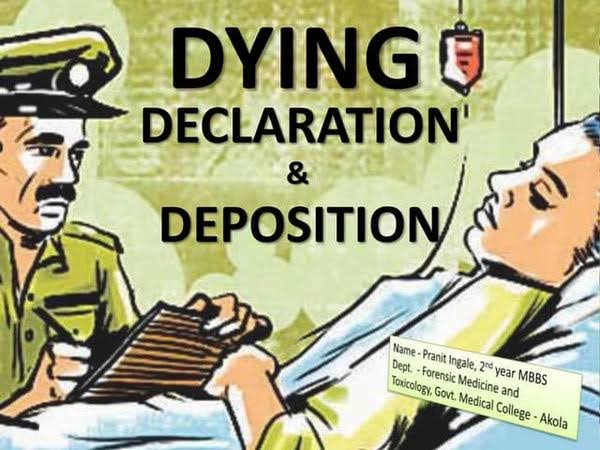@JUDGMENTTAG-ORDER
Honourable Mr. Justice K. Chandru
1. This writ petition is filed by the two brothers, who are the resident of Lingapuram, Pandalkudi Post, Arupukkottai Taluk. In this writ petition they have sought for a Writ in the nature of Mandamus, forbearing the respondents from taking any action for dispossessing the petitioners'' occupation of the property comprised in S.No.140/52-A and 52-B to the extent of three cents respectively situated at Lingapuram Village, T. Koppuchithampatti Group, Aruppukkottai Taluk, Virudhunagar District, without due process of law.
2. This writ petition was admitted on 26.06.2008. Pending the writ petition an interim stay was granted. Subsequently, the Panchayat President of Pandalkudi, represents by its President, filed M.P.(MD)No.1 of 2009 to implead and M.P.(MD)No.2 of 2009 to vacate the interim orders. The impleading was ordered by this Court. In the vacate interim injunction application, after hearing both sides, this Court found that the land was "Oor Podu Idam" (communal land) and the public are using the property from time immemorial. Therefore, since the said land is maintained by the Panchayat and there was a proposal to put up Library, Community Hall and a Water Tank, the injunction application was dismissed and the vacate injunction application was allowed and the main writ petition was directed to be posted on 13.11.2011.
3. When the main writ petition was posted for hearing, it is brought to the notice of this Court that earlier the petitioners have also filed writ petition in W.P.No.3426 of 2007, filed by the second petitioner M.K. Kandasamy for an identical prayer. In that writ petition Notice on Admission was given. But, no interim orders are passed so far. When the second writ petition came up on 04.06.2007, in that writ petition this Court passed an order that the first petitioner M.K. Alagarsamy has also filed W.P.(MD)No.3745 of 2007. Therefore that writ petition was directed to be posted along with W.P(MD).No.3426 of 2007. It transpires the other writ petitions filed by the first writ petitioner. The prayer was identical to the one, which is filed in this writ petition. The first writ petitioner''s writ petition was admitted on 21.04.2007. In that writ petition, in the application for interim injunction only notice was ordered. When these two writ petitions are pending, the same brothers have joined together and filed the present writ petition in the year 2008 viz., W.P.(MD)No.5663 of 2008. In the affidavit filed in support of the writ petition, which was sworn to by one M.K. Alagarsamy, the petitioner in the earlier writ petition W.P.No.3745 of 2007, there is no reference to the previous writ petition filed by him. Even in the typed set filed, there is no disclosure of the pendency of the earlier two writ petitions filed by the two petitioners. Therefore, the attempt of the present petitioner is to seek somehow an interim order, which has failed to obtain in the previous two writ petitions. It is also now brought to the notice before this Court that W.P.No.3426 of 2007 filed by M.K. Kandasamy, when it came up for final hearing on 17.07.2007, the counsel made an endorsement in the Court bundle on 17.07.2007, which is as follows:
I withdraw this matter". Signed by counsel. On the basis of the endorsement that writ petition was dismissed on 17.07.2007 as withdrawn.
4. Having filed a writ petitions for similar prayer and having withdrawn the writ petitions without any liberty to file a subsequent writ petition, it is not clear as to how the petitioners can file a second writ petition. Therefore, the second writ petitioner, M.K. Kandasamy, has no right to file such a writ petition. In any event he ought to have made a representation referred to the affidavit to the writ petition.
5. On the contrary, when the writ petition in W.P.5663 of 2008 was filed, since there is no averment in the affidavit regarding the previous writ petitions, If any, filed and also as required under the rule framed under Art.226 of the Constitution, the Registry directed the counsel for the petitioner to make an endorsement. The counsel on 18.06.2008 made an endorsement, as follows:-" "There is no Writ Appeal pending, as stated in the communication addressed to the respondent."
6. In paragraph 10 of the affidavit the petitioner has stated that the earlier writ petitions seeking the relief claimed in the present writ petition are withdrawn and dismissed. The said statement made by the petitioner in the affidavit is only partially true because, only W.P.No.3426 of 2007 was withdrawn and dismissed on 17.07.2007, whereas, the writ petition filed the said Alagarsamy, the first writ petitioner viz., W.P.No.3745 of 2007 was not withdrawn on that date. It came to be withdrawn only on 09.07.2010, long after the said averment made in paragraph 10 of the affidavit. Even in that case, the petitioner made an endorsement in the Court bundle, which is as follows:
I hereby withdraw the writ petition, as not pressed.
7. The petitioners are not only guilty of suppression of truth but also having allowed to withdraw the writ petitions without any liberty to file a fresh writ petition or to pursue the existing writ petitions, cannot be allowed to pursue the present writ petition. The writ petition is liable to be dismissed on the short ground that the petitioners have suppressed the vital information from this Court and also allowed the earlier two writ petitions to be withdrawn without any liberty to file a fresh writ petition. The respondents have also filed a counter affidavit.
8. In the context in is necessary to refer the recent judgment of the Supreme Court in
163. Whenever the court comes to the conclusion that the process of the court is being abused, the Court would be justified in refusing to proceed further with the matter. This rule has been evolved out of the need of the courts to deter a litigant from abusing the process of the court by deceiving it. However, the concealed fact must be a material one in the sense that had it not been suppressed, it would have an effect on the merit of the case/order. The legal maxim jus ex injuria non oritur means that a right cannot arise out of a wrongdoing, and it becomes applicable in a case like this. (Vide
164. It is a settled proposition of law that a false statement made in the court or in the pleadings, intentionally to mislead the court and obtain a favourable order, amounts to criminal contempt, as it tends to impede the administration of justice. It adversely affects the interest of the public in the administration of justice. Every party is under a legal obligation to make truthful statements before the court, for the reason that causing an obstruction in the due course of justice "undermines and obstructs the very flow of the unsoiled stream of justice, which has to be kept clear and pure, and no one can be permitted to take liberties with it by soiling its purity".(Vide
165. In
34....Prerogagtive writs....are issued for doing substantial justice. It is, therefore, of utmost necessity that the petitioner approaching the writ court must come with clean hands, put forward all the facts before the court without concealing or suppressing anything and seek an appropriate relief. If there is no candid disclosure of relevant and material facts or the petitioner is guilty of misleading the court, his petition may be dismissed at the threshold without considering the merits of the claim
(Emphasis added)
166. While deciding the said case this Court relied upon the leading case of R.V. Kensington Income Tax Commissioners ((1917) 1 KB 486 (CA), wherein it had been observed as under (KB p.514)
...when an applicant comes to the court to obtain relief on an exparte statement he should make a full and fair disclosure of all the material facts -(it says) facts, not law. He must not misstate the law if he can help it-the court is supposed to know the law. But it knows nothing about the facts, and the applicant must state fully and fairly the facts, and the penalty by which the court enforces that obligation is that if it finds out that the facts have not been fully and fairly stated to it, the court will set aside any action which it has taken on the faith of the imperfect statement.
(Emphasis added)
36...If the applicant makes a false statement or suppresses material fact or attempts to mislead the court, the court may dismiss the action on that ground alone....The rule has been evolved in the larger public interest to deter unscrupulous litigants from abusing the process of court by deceiving it.
(Emphasis supplied)
167. In such a case the person who suppresses the material facts from the court is guilty of suppressio veri and suggestio falsi i.e. Suppression or failure to disclose what a party is bound to disclose, which may amount to fraud.
9. Even in this writ petition in M.P.(MD)No. 2 of 2008, while vacating the interim injunction, this Court on 25.11.2010 passed a considered order stating that the land is "Oor Podu Idam" and maintained by the Panchayat and that order is not a subject matter of any challenge. Under the said circumstances, the writ petition is misconceived and bereft of any legal reasons and stands dismissed. However, this Court is not inclined to order costs.

